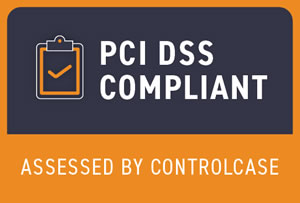 navigate_nextSecurity Tipsnavigate_nextGood Cyber Hygiene to protect yourself online
navigate_nextSecurity Tipsnavigate_nextGood Cyber Hygiene to protect yourself online
Good Cyber Hygiene to protect yourself online
Nowadays, online activities and electronic device usage have intensively increased, as Internet Service can be easily accessible anywhere and anytime. Such activities are not safe if one is not aware of the good practices of using the Internet correctly and safely. Such practices are alternatively called Cyber Hygiene. Being aware of utilizing Cyber Hygiene daily can possibly prevent one from falling victim to the era of emerging technology.
Cyber Hygiene trains you to think about your cybersecurity practices to withstand online cyber threats and security challenges as you do with your daily personal hygiene.
Good cyber hygiene key steps for your daily practice on digital platforms:
- Step 1: Install reliable antivirus and anti-malware software
- Protection from virus and malware threats.
- Prevention of possible phishing attacks and online threats.
- Protection from identity theft.
- Secure the entire device.
- Step 2: Utilize network firewalls
- Install and enable Firewall software to protect your network from being compromised or even unauthorized threats activities.
- Firewall utilization can possibly monitor network traffic, stop virus attacks, prevent hacking, stop spyware, and even promote privacy.
- Step 3: Update software and Operating System regularly
- Regularly update your applications as well as web browsers.
- Regularly update your Operating System to make your devices' security better.
- By doing such activity, your devices can be secure from vulnerabilities occurring within.
- Step 4: Set strong and complex passwords
- Use strong and complex password to protect your device.
- Follow these three qualities to achieve a good password: length, complexity, and uniqueness.
- Always set strong protection password for all systems you access on daily basis, especially, banking service applications.
- Use password manager to store your passwords securely.
- Do not share your personal passwords with anyone else.
- Step 5: Utilize multi-factor authentication
- Enforcible Two-factor or multi-factor authentication is the best practice and additional protection layers for your digital platforms especially financial service applications.
- Step 6: Deploy device encryption
- Use reliable encryption software to protect your sensitive information from being compromised by any means.
- Encryption ensures the integrity of data within your devices.
- Step 7: Back up crucial data regularly
- Backup your sensitive data to secure external storage, offline or in the cloud that is separated from the original source. By doing so can prevent data loss by any means it may occur.
- Step 8: Keep your hard drive clean
- If you plan to sell your devices, you would make sure to keep your hard drives clean and secure wiping your data to avoid unintentionally losing your sensitive data.
- If your device is hacked, a clean hard drive means less information that accessed.
- Step 9: Secure your network router
- Secure configure your router by turning off and updating the default name and password.
- Turning off remote management, and logging out as the administrator once it is set up.
- Configure your router to WPA2 or WPA3 encryption to maintain the highest level of privacy of information sent via your network.
- Others considerations practices
- Remove any unnecessary or suspicious software you find in your devices.
- Limit users who should have privilege to access your devices.
- Do not install unknown or unreliable software on devices, as it could be virus like Trojan, Ransomware...
- Limit number of software running in the background.
- Use VPN for securing your internet traffic when using your systems/devices in public places, e.g. cafes, airports, lounges, and stations.
- Do not click any suspicious pop-ups on any website or through email that embedded link/attachment file as it would potentially harm or reveal any sensitive personal information to the cybercriminal.
Having antivirus and anti-malware software installed on personal devices would provide benefits as below:


 USD
USD THB
THB EUR
EUR AUD
AUD VND
VND CAD
CAD LAK
LAK JPY
JPY GBP
GBP CNY
CNY






